The union of the polarities
January 24, 2010
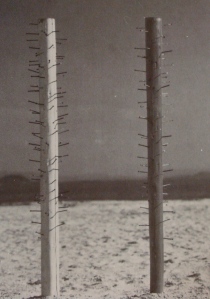


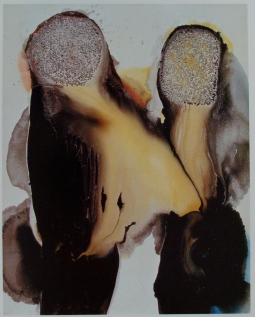
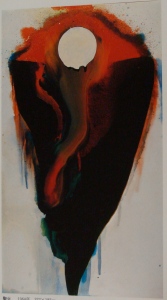

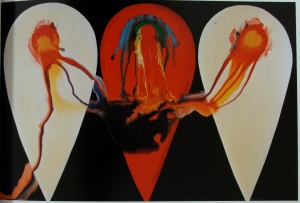
Sadamasa Motonaga: Nails, 1955; Work, 1960; Work, 1961; Work, 1963; Sacred Fire, 1964; Work, 1965; Work, 1965.
Subsequent developments in the work of Sadamasa Motonaga further suggest the subtle physiology of the union of the polarities.
Yônílingam
January 23, 2010
Sadamasa Motonaga
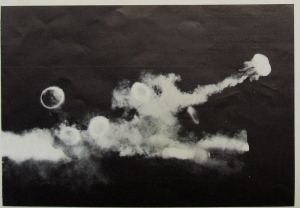
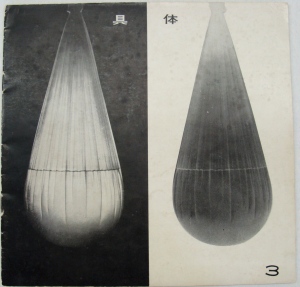




Sadamasa Motonaga: Smoke, 1st Gutai Art on Stage, 1957. Work (water), 1st Outdoor Exh., 1955. Stretch, 2nd Gutai Art on Stage, 1958. Yônílingam at a temple and a portable Yônílingam.
The work Smoke, of the Gutai artist Sadamasa Motonaga, seem to prefigure the Yônílingam: projected by machines, smoke rings (yôní: the feminine principle, or prakrití) hover through the air, drawing cilinders (lingam: the masculine principle, or púrusha). The fluidity and natural character of the material used by Motonaga is in continuity with the primary element that flows in the yônilingam, water.
The yônilingam represents the extraordinary accomplishment that results from the reunion of the polarities – the feminine and the masculine principles, Shaktí and Shiva, prakrití and púrusha – the goal of the creative teleology of life.
Motonaga’s work Smoke can be better understood in the reciprocal relation between the piece Work (Water) and the piece Stretch. The first consisted of strips of polythylene stretched between trees, containing coloured water, icons for the feminine principle; the second, a plastic inflatable tube containing smoke that escapes through small holes along its surface, icons for the masculine principle. The work Smoke accomplishes an integration of both principles in one piece.